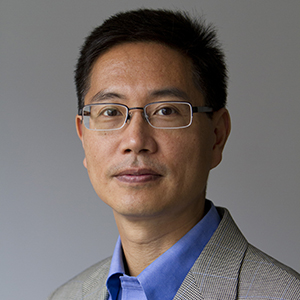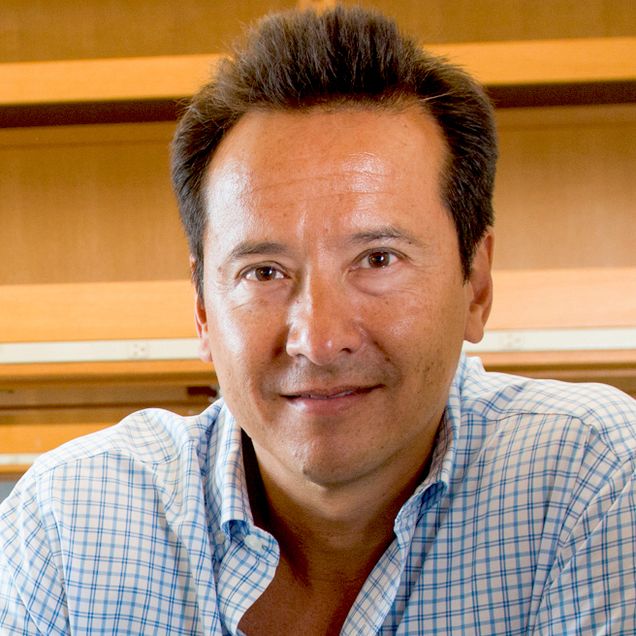Three BU Research Teams Win First Kilachand Fund Awards
$100 million fund will continue to honor cutting-edge researchers in life sciences and engineering
By Chuck Leddy
Originally featured on The Brink
In 2018, BU trustee Rajen Kilachand (Questrom’74, Hon.’14) made the largest gift in Boston University’s history: $115 million. From that gift, $100 million established an endowment, the Rajen Kilachand Fund for Integrated Life Sciences and Engineering, to support interdisciplinary research and solutions to some of today’s most vexing societal woes and medical diseases.
Now, the first three teams to receive Kilachand awards through a University competition will use the funding to develop new solutions in multicellular design, biosensors, and modeling the human brain.
“The Kilachand fund has already begun to achieve its major goal of catalyzing collaborations across disciplines,” says Gloria S. Waters, BU’s vice president and associate provost for research. “It’s wonderful to see faculty from so many different disciplines and parts of campus coming together to solve societal problems that could not be solved by any single discipline.”
The three winning teams were selected by an advisory committee from a total of 35 proposals submitted by BU faculty across the College of Arts & Sciences, the College of Engineering, Sargent College of Health & Rehabilitation Sciences, the School of Medicine, and the School of Public Health. Preference is given to projects that stand to spark support for major new research initiatives that interconnect faculty from different academic disciplines. Meet the inaugural winners:
Christopher Chen for Multicellular Design

Photo by Chitose Suzuki
Christopher Chen, an ENG professor of biomedical engineering and materials science and engineering and a William Fairfield Warren Distinguished Professor, and his team—including co–principal investigators Allyson Sgro, an ENG assistant professor of biomedical engineering, and Pankaj Mehta, a CAS assistant professor of physics—were awarded $1 million to develop new medical therapies from groups of cells that work together, just like they do in nature.
Chen says that the life sciences already have a deep understanding of cells on an individual level, but not collectively: “Multicellular communities operate differently in our bodies, including the bacteria that coexist in our gut or cause infections and even cancers.” He says his team will focus on how cells work together in communities to create functioning tissues, to resist antibiotics, or slow the growth of cancerous tumors.
“Understanding multicellular design principles,” Chen says, “could uncover new ways to fight infections and cancer, heal wounds, or regenerate organs.”
The research will require collaboration across disciplines. “In particular,” he explains, “it takes experts from computing, physics, mathematics, engineering, biology, and medicine working in integrated teams.”
BU is particularly well-suited for this interdisciplinary approach, says Chen. “At BU, we have a unique combination of strengths in synthetic biology, microbial engineering, tissue engineering, data science, and biophysics that will be integrated in the Multicellular Design Program, which the $1 million award will kick-start.”
Working across disciplines will also be a boon for the students who will do research alongside the faculty team members. “Industry advisors have repeatedly said how important it is that our students develop an ability to work on teams with a variety of backgrounds, training, and skill sets,” Chen says. “We believe that our Multicellular Design Program will prepare students for future careers.”
James Galagan for Using Microbes to Build Biosensors

James Galagan, an ENG associate professor of biomedical engineering, and his team were awarded $250,000 for researching the use of microbes to build biosensors.
“Any problem that involves biology will benefit from inexpensive, portable, and real-time biosensors. A wonderful example of this approach is the bionic pancreas developed by Ed Damiano here at BU,” Galagan says. “It uses a continuous glucose sensor to precisely control insulin and glucagon dosing to maintain normal glucose levels. This glucose sensor is one of the inspirations for us in developing a host of new sensors.”
The award will enable Galagan and his team to mine biosensing parts from bacteria through a screening approach they’ve developed. These biological parts, “borrowed” from microbes, will then be optimized to develop a host of new electronic biosensor devices. Then, they plan to deploy these sensors in minimally invasive wearable health devices.
“The goal of our team is to do work that translates into new technology that will be widely used and have a positive impact on society. Sensors in wearable health devices could monitor our well-being, prevent disorders, detect health issues in their early stage, and monitor treatments,” says Galagan. The team’s biosensor research could also impact biotechnology, drug development, environmental monitoring, agriculture, and more.
“The reach of engineering into biology depends on the development of biosensors,” he says.
Modeling the Human Brain, in 3-D

Christine Cheng, a CAS assistant professor of biology, and Ben Wolozin, a MED professor of pharmacology and neurology, and their team have been awarded $250,000 to improve our ability to model brain diseases using a synthetic 3-D brain organoid, a living tissue that has human neurons and develops the exact pathology that happens in human brains. Their research would allow for the testing of potential treatments for brain diseases such as Alzheimer’s or amyotrophic lateral sclerosis (ALS), or Lou Gehrig’s disease.
Until now, the only way to model brain disease pathology has been to use a mouse model, which is problematic because mouse neurons differ greatly from human neurons. Another benefit of the 3-D organoid is time: whereas animal models take nine months to develop disease to a point where it can be studied, the brain organoids develop robust disease in only three weeks. This means any potential therapy could be tested more quickly.
“Ours is a highly interdisciplinary team,” says Cheng. “My lab brings in expertise in 3-D organoid, single-cell transcriptomics and bioinformatics, while Ben Wolozin’s lab brings in the deep understanding of the disease pathology and mechanism of Alzheimer’s disease.”
What impact will the award have? “The research is immensely expensive,” says Cheng. “The $250,000 award will help us generate preliminary results that will allow us to obtain federal funds that can fully support these research projects.” For Wolozin, the award enables their research to expand further. “Having established this program [for Alzheimer’s], we can move on to other diseases, such as Parkinson’s disease or ALS, as well as depression or autism,” he says.